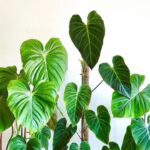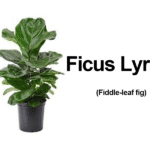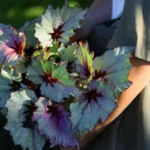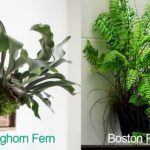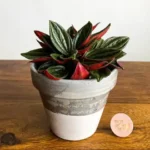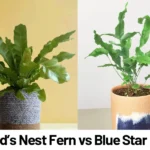Why Are Spider Plant and Chlorophytum Bonnie So Often Confused?
When it comes to easy-care houseplants that thrive in a range of indoor settings, few are more beloved than the Spider Plant (Chlorophytum comosum) and its charming cousin, Chlorophytum ‘Bonnie’. These two leafy companions occupy the same niche: they’re both low-maintenance, visually striking, perfect for hanging baskets, and excellent air purifiers. Unsurprisingly, many plant enthusiasts mistake one for the other—or don’t even know they’re different!
While ‘Bonnie’ is technically a cultivar of the common Spider Plant, it has distinguishing features that make it more than just a lookalike. Whether you’re furnishing a small apartment, building a pet-friendly plant collection, or starting your indoor gardening journey, this side-by-side comparison will clarify the key differences and help you choose the plant that fits your lifestyle and aesthetic preferences.
Spider Plant vs. Chlorophytum Bonnie: Quick Comparison Table
| Feature | Spider Plant (Chlorophytum comosum) | Chlorophytum ‘Bonnie’ |
|---|---|---|
| Botanical Name / Family | Chlorophytum comosum / Asparagaceae | Chlorophytum comosum ‘Bonnie’ / Asparagaceae |
| Native Region | South Africa | Cultivar (originated in cultivation from South African species) |
| Leaf Shape & Size | Long, arching linear leaves (up to 16 inches) | Curlier leaves, often shorter (around 8–10 inches), spiral or looped form |
| Growth Habit & Speed | Sprawling, quickly produces offshoots; moderate to fast growing | Compact, slower to spread; moderate growth rate |
| Stem Structure / Unique Features | Straight flower stalks, produces pups (baby plants) | Curled foliage; more ornamental; often produces fewer pups |
| Light Requirements (lux) | 2,500–10,000 lux (bright indirect preferred) | 2,500–8,000 lux (tolerates slightly lower light) |
| Watering Needs & Humidity | Water when top 1–2 inches are dry; tolerates 40–60% RH | Slightly less drought-tolerant; RH of 50–60% preferred |
| Pet Safety / Toxicity | Non-toxic to cats and dogs | Non-toxic to cats and dogs |
| Typical Price & Availability | Widely available; lower cost ($5–15 for 4–6”) | Moderately available; mid-range price ($10–20 for 4–6”) |

Key Differences You Should Know
Visual Identity: Straight vs. Curled Aesthetic
Perhaps the most immediate way to tell the difference between these two plants is by examining the shape and style of their leaves. The traditional Spider Plant is admired for its elegant, arching foliage, often variegated with white or light green stripes. The leaves can grow quite long—up to 16 inches—and drape outward in a fountain-like burst from the center.
In contrast, Chlorophytum ‘Bonnie’ features uniquely curled or twisted leaves, giving it a quirkier, sculptural appearance. Often described as more “whimsical” or “ornamental,” the curly nature of ‘Bonnie’ makes it a standout. Its leaves are typically shorter—more compact and coiled—which makes this cultivar ideal for those looking for a plant with a more vertical or defined form.

Space Suitability: Compact ‘Bonnie’ Shines in Small Settings
If you have limited space or prefer tabletop or windowsill displays over hanging baskets, ‘Bonnie’ might be your better bet. Its compact growth pattern and less aggressive propagation behavior suit contained environments. While traditional Spider Plants are prized for their ever-expanding clusters of pups or offshoots, they can quickly overflow smaller containers or become visually untidy in constrained spaces.
‘Bonnie’ still sends out occasional flower stalks with baby plants, but much more modestly. This difference allows it to remain neater, making it especially favorable for desks, bookshelves, or smaller apartments where space is at a premium.
Care Profile: Similar but With Slight Nuances
Both plants excel in bright, indirect light, though Spider Plants can tolerate higher light levels (up to 10,000 lux) without stress, whereas ‘Bonnie’ does best in softer, medium-light settings (between 2,500–8,000 lux). This makes ‘Bonnie’ a solid option for slightly dimmer rooms—just not deep shade.
In terms of watering, standard Spider Plants are slightly more forgiving. They tend to withstand drier soil conditions better than ‘Bonnie’, which may show leaf browning or curling if allowed to completely dry out. Humidity needs are also similar, though ‘Bonnie’ benefits from a touch more ambient moisture, ideally around 50–60% relative humidity.

Decorative Function: Statement vs. Subtle Accent
If your goal is to fill hanging baskets or create a living waterfall effect, the classic Spider Plant delivers. Its long, arching runners covered in baby plants make it one of the few beginner plants that quickly fills space with architectural drama. On the other hand, ‘Bonnie’ shines as a decorative accent—its swirled leaves add a whimsical, artistic edge to minimalist or modern interiors without overwhelming the room.
Which One Should You Choose?
Choose the Traditional Spider Plant If You:
- Want a fast-growing plant with quick propagation for sharing or multiplying.
- Have hanging baskets or larger containers to fill.
- Prefer a classic plant with broad availability and budget-friendly pricing.
- Need a hardy, drought-tolerant plant for busy or low-maintenance lifestyles.
- Appreciate a more cascading, loose form.
Choose Chlorophytum ‘Bonnie’ If You:
- Live in a smaller space or want a compact, curled aesthetic for surfaces or tight shelves.
- Prefer a tidier, sculptural look with minimal offshoots.
- Are decorating a specific space with artistic or whimsical elements.
- Have slightly lower lighting conditions or want a plant in a bright-lit bathroom or kitchen.
- Don’t mind a slightly more moderate watering schedule or providing light humidity.

Final Thoughts
Whether you choose the reliable and classic Spider Plant or the curly charm of Chlorophytum ‘Bonnie’, you’re making a smart choice for your indoor garden. Both options are beginner-friendly, non-toxic to pets, and visually delightful in their own right. The key differences lie in their size, shape, and style—and how actively each reproduces. For those with ample space and a penchant for propagation, the traditional Spider Plant is a powerhouse. But if you prefer compact charm and controlled growth, ‘Bonnie’ adds a modern and playful twist to any indoor plant collection.
References
- Brkovich, S. A., & Zhang, D. (2021). Indoor plant care strategies and tolerances. Journal of Urban Horticulture, 12(3), 145-158.
- Royal Horticultural Society. (2023). Chlorophytum comosum (Spider Plant). Retrieved from https://www.rhs.org.uk/plants/4064/chlorophytum-comosum/details
- ASPCA. (2024). Spider Plant. Retrieved from https://www.aspca.org/pet-care/animal-poison-control/toxic-and-non-toxic-plants/spider-plant


